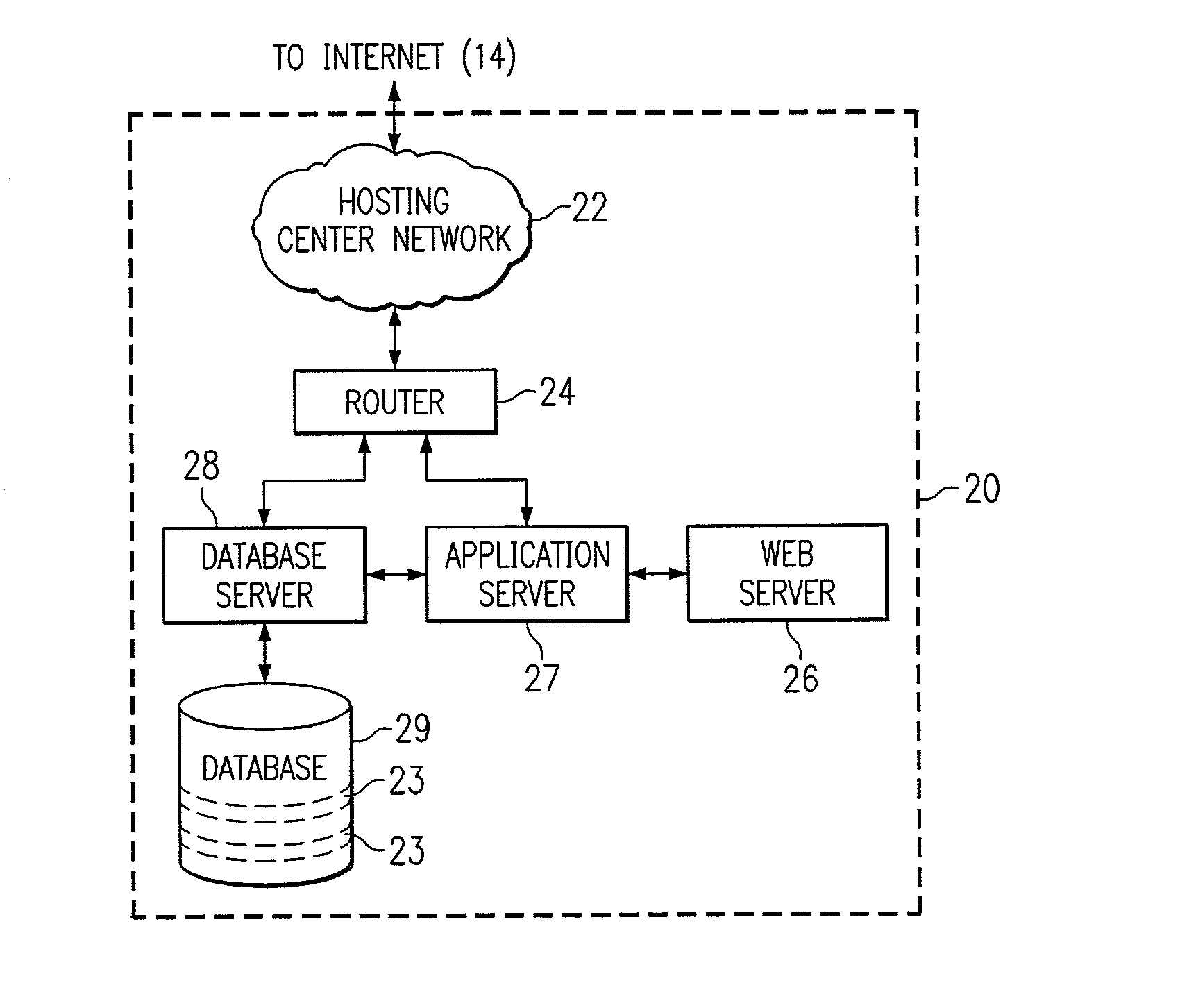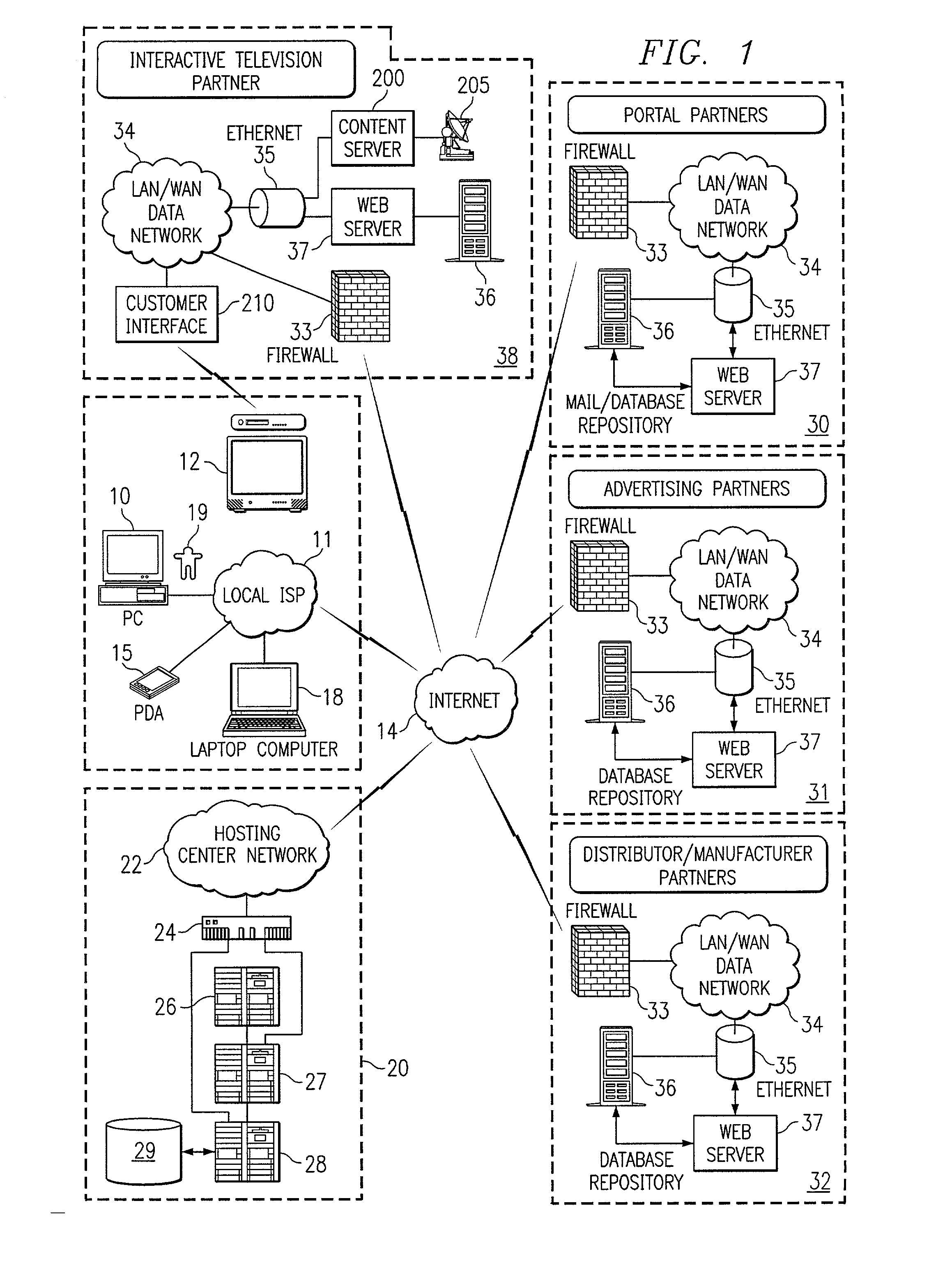[0005] Described is a system and method for distributing, collecting, and organizing Virtual Retail Collateral Documents ("VRCDs"), including virtual documents like merchant coupons, product warranties, sales confirmations and receipts, product instructions, service instructions, rebates, gift certificates, product registration cards, event tickets,
credit card statements,
bank statements, internet sites user names and passwords, and recipes. These VRCDs may be delivered to an Internet user or other network user via e-mail, banner ads,
interactive television, or via digital phones, or other digital method, thus further adding to the organizational challenge for the
consumer.
[0007] The application described here addresses the converging needs of consumers, Internet-connected merchants, and content providers (e.g. Yahoo, Lycos and other portals). Consumers like discounts and coupons, organization, convenience, and ease of use, but need a tool to organize, archive and consolidate VRCDs; advertisers need to personalize and target their messages in order to get their message through to information-overloaded consumers; content providers need to enhance "stickiness" to maximize revenues from the sale of their mailing lists and banner ads. The described system and method addresses the needs of these disparate groups. In particular, the described system and method gets, facilitates and enables the advertiser / merchant's message to get through to the
consumer, by automatically organizing the VRCDs for the consumer for later convenient and easy access by the user.
[0010] To facilitate the
categorization and storage of VRCD information, attribute files are preferably associated with each of such VRCDs. These attribute files would preferably have defined fields and header information which would be provided to a merchant or
service provider, for example, who would attach or associate the attribute file with the VRCD sent to the user or to the VRCD
database host on the user's behalf. The merchant or
service provider would preferably attach the attribute file to the VRCD, which would then be sent to the user or the users' individual database at the entity's website, through one of many different channels. Once these VRCDs are sent for storage to the host of the VRCD web-based organizer, the host will then know from the attribute file how to categorize or classify the information from that VRCD. In other words, the merchant or
service provider provides the VRCD along with an attribute file, which allows the host of the web-based organizer to automatically categorize a user's Information contained within the attribute file which might include a merchant ID, merchant class,
web site URL, merchant address, map, and e-mail information. More preferably, a merchant ID and promotion ID might be the only information contained in the attribute file, and the other merchant characteristics would preferably be stored and associated with that vendor at the PDRC VRCD database web host.
[0013] In the instance of commercial solicitations through bulk or targeted e-mails containing embedded VRCDs, the VRCD database host or administrator would preferably provide a merchant, who has received opt-in
authorization from the consumer, proprietary header and field format information for the attribute file to be associated with the VRCD; the VRCD would then be embedded in the e-mail or banner ad solicitation. The embedded VRCD preferably contains a VRCD organizer button, which the consumer would click, and the VRCD would be transmitted through the network to the VRCD database host. The information from the VRCD would then be placed in the appropriate portion of the user database based on the information in the VRCD's affiliated attribute file. Once information from such VRCDs are in the user database, the user / consumer who is the "owner" of that database can conveniently access that information at any time. By this technique, the advertiser can distribute a coupon VRCD via
mass e-mail or banner ad.
[0015] If the VRCD is associated with a banner ad, the consumer would click the VRCD organizer button in the coupon banner ad, and the VRCD would be transmitted through the network and placed in the appropriate portion of the user database. Once information from such VRCDs are in the user database, the user / consumer who is the "owner" of that database can then conveniently access that information at any time. Banner ad click-through rates have declined substantially. The rates that destination sites can charge have declined as a result. Moreover, banner ads often take the user away from the
destination site to the advertiser, reducing stickiness. For the consumer, it may not be convenient to click the banner ad to click through and claim the offer, even though he wants it. By providing a system which provides convenience for the user to click the banner ad and claim the offer and organize the offer in his personal VRCD organizer for later redemption with the merchant, while staying at the
destination site, the three parties, consumer, merchant, and
destination site benefit. The user can claim the offer at a later convenient time; the merchant can make another sale, and the destination site can charge more for its banner ad space.
 Login to View More
Login to View More  Login to View More
Login to View More 


